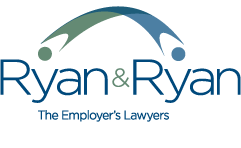If an employee has, or is believed to have, an qualifying disability within the meaning of the Americans with Disabilities Act (the “ADA”), the employer should engage in the Interactive Process. The Interactive Process is an informal process in which the employee is able to clarify what type of work-related accommodation s/he needs as a result of such disability. The employer and the employee work together to identify the appropriate, reasonable accommodation that allows the disabled employee to remain working. The employer need not accept any accommodation put forth by the disabled employee, but it also cannot without potential liability reject a reasonable accommodation. Ultimately, the choice between multiple reasonable accommodations belongs to the employer.
The employer may ask the disabled employee relevant questions that will enable it to make an informed decision about the accommodation request (or, if no request but the disability is obvious, to decide whether there is a reasonable accommodation that may exist). It should be noted that the more obvious the disability, the less extensive may be the questions about the disability/needed accommodation. This is because the EEOC will presume that the more obvious a disability, the more obvious are the resultant limitations (and, in turn, the more obvious will be the accommodations necessary to allow the individual to remain in the workplace). In this regard, the EEOC has indicated that requesting documentation for an obvious disability is not reasonable.
The employer is allowed to do the following:
- Ask the employee what type of reasonable accommodation is needed.
- Ask about the nature of the disability and the individual’s resultant functional limitations.
- Ask for a description of the problems posed by the workplace barrier, and the accommodations the employee believes will remove that barrier.
- Ask for documentation from the appropriate medical practitioner or rehabilitation professional regarding the disabling condition (no more than is necessary to assess the disability, to determine if it is an ADA-qualifying disability and to identify potential accommodations).
- Ask for additional documentation if the initial documentation provided is insufficient to allow the employer to assess the disability, to determine if it is ADA-qualifying and to identify potential accommodations. Documentation is insufficient if it does not specify the existence of an ADA disability and explain the need for reasonable accommodation.
- Ask whether the person would be willing to be seen by a medical practitioner of the employer’s choosing (if the employee does not provide sufficient documentation, despite opportunity, and the medical examination is job-related and consistent with business necessity).
If an employee’s disability or need for reasonable accommodation is not obvious, and s/he refuses to provide the reasonable documentation requested by the employer, then s/he is not entitled to a reasonable accommodation. Importantly, the employer is entitled to request a limited release for the purposes of obtaining documentation or submitting a list of specific questions to the medical practitioner or vocational professional (so long as the information is being sought because it allows the employer to determine whether the asserted disability is an ADA-qualifying disability).
If you have questions about the ADA interactive process, please contact William Ryan at william.ryan@ryan-ryan.net or by telephone at 203-752-9794.
